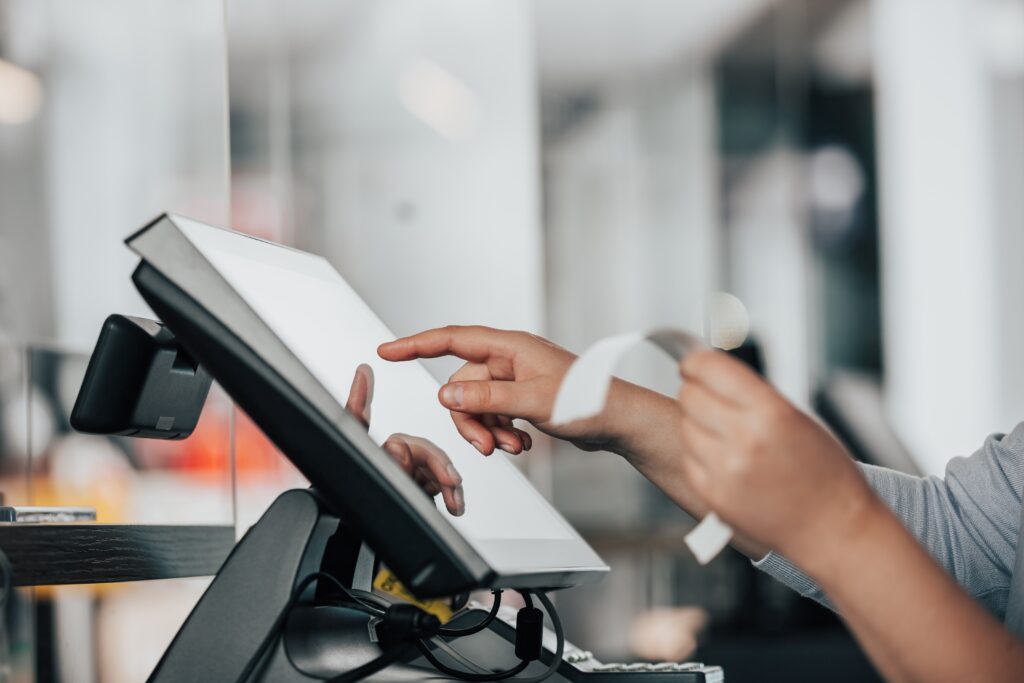While online and in-app ordering have surged in popularity, phone orders remain a critical revenue source. According to a recent Statista report, ordering via phone call was actually the ‘most preferred method’ for guests to place a takeout or delivery QSR order. And even as more stores become fully staffed, managing the phones remains challenging.
Restaurant owners have three solutions for phone orders: implementing voice AI, outsourcing to a call center, or relying on in-store staff. With so many conversations circulating around each choice, it’s important to understand the differences among them to choose the best fit for your stores’ needs.
Voice AI, also known as conversational AI, is one of the fastest-growing categories in the restaurant industry. With voice AI, guests speak to a virtual assistant in the same way they’d speak with a person, holding a natural and free-flowing conversation. While most people still associate voice AI with old and frustrating automated systems, the voice AI of today actually provides an enjoyable guest experience that keeps customers coming back.
Voice AI answers every call with a personable approach, taking orders and inputting them directly into your POS system. Getting started with voice AI is quick, simple and hands-off, where the AI provider connects directly with your telephony system. No staff training is required.
Eliminating hold times and missed calls
AI can handle limitless calls at once, so guests are never left waiting for someone to pick up when they call in. Similarly, guests can spend as much time as they’d like on the call without feeling rushed since there’s nobody on the other end of the line who needs to get back to the make line. AI also allows guests to save their favorite items for the next time they call in, allowing them to complete their orders immediately.
Limitless scale
Because AI isn’t constrained by physical limitations, it can handle the dinner rush, weekends and holidays with the same ease as a Tuesday afternoon.
Non-order calls
Voice AI can handle a variety of non-order calls, keeping calls in the stores to a minimum. It’s also worth noting that if a guest wants to speak with a person, the AI provider gives them the option to do so.
Continuous improvement
By processing millions of conversations a month, AI learns at an exponential rate, akin to a top team member absorbing the lessons learned by every other team member and manager in not just your stores, but all stores across your brand where AI operates.
Limited understanding of technology
Some guests may be hesitant to order with AI because of a past experience with older technology.
Technical difficulties
While rare, and voice AI providers don’t typically store sensitive information such as payment info anyway, technical difficulties nevertheless happen from time to time.
Loss of the human element
As personable as voice AI can be, it’s still not a physical person on the other end of the line. Granted, the rise of online and in-app ordering has shown that this factor isn’t influencing as many people as it used to.
Guests are pleasantly surprised with their experience using voice AI, and customer satisfaction scores from AI calls often exceed the quick-service industry standard. Staff often enjoy less stress and higher job satisfaction, resulting in lower turnover. Owners and operators who have made the switch have noted increased sales, average ticket and profitability.
QSR Magazine states that the future of the restaurant industry is rooted in the adoption of AI to optimize operations and enhance guest experience. Many leading restaurant brands are already using AI, including Domino’s, where AI is active in nearly 1,200 stores.

Call centers are outsourced phone answering services, typically based overseas, run by agencies that train agents on menu items and scripting to serve as the face of your brand.
Outsourced human labor
Call centers provide a human touch while relieving your staff to focus on other tasks.
Dynamic staffing
Most call centers will allow you to staff more agents during different times of the week, accommodating for weekends and holidays. These additional agents come at an additional cost. Staffing specifically for peak meal periods throughout the day can be tricky, as well as staffing for high-volume holidays like Halloween and Super Bowl Sunday.
Legacy solution
Call centers have served as a longstanding way for restaurants to outsource phone orders, with call center agencies across the world that have operated in the same way for decades.
Accents and language barriers
Using overseas staff can come at the risk of more guest complaints. Guests can often report problems communicating with overseas agents due to dialect issues and trouble understanding each other.
Order discrepancies
Due to the language barrier, some orders may be placed incorrectly, resulting in the need for the local store to remake the food.
Restricted scale
Call centers aren’t always able to keep up with demand, since they may not be able to recruit and train enough agents to support you during peak times. Their scale can be further limited by additional costs. In these cases, excessive calls will flow back into your stores with the potential for lost sales. Most call centers also don’t handle non-order calls.
Overseas labor
Call centers face the same problems as franchisees when it comes to turnover and staffing during peak times. This could result in inconsistent customer experience and longer hold times.
Call centers are a classic option for outsourcing phone handling and reducing labor costs. If your store staff are having trouble managing the phones and you’re not necessarily ready to embrace technology, call centers could serve as a viable option.

Whether operators hire a dedicated team member to answer the phones or have the task shared among staff, this method keeps the phones under control at the store level.
No additional vendors
As long as you’re not hiring additional staff, you’re not paying additional out-of-pocket expenses here. Just make sure that you’re not losing more on missed sales than you’re saving in vendor fees.
Control of guest experience
Owners can set regulations to better manage phone encounters and any customer service issues can be escalated to the on-duty manager. Guests also have the opportunity to form relationships with staff after repeat calls.
Missed calls
When answering the phones in-store, you’re limited by the number of staff you have and their availability to break from whatever they’re doing to answer the phone. If they don’t answer, the guest waits on hold or the call can go unanswered, resulting in a missed sales opportunity.
Constant interruption of operations
Order fulfillment gets put on pause each time the telephone rings unless there’s a dedicated team member to answer the phones, resulting in lower order count.
Additional stress for staff
Staff juggling multiple tasks already may get overwhelmed with phones ringing, leading to lower productivity and higher turnover.
If you’re in a market that isn’t as prone to embracing technology or call center agent accents, sticking to handing phone orders in-store could be for you. Likewise, if your store’s labor has sufficient bandwidth to answer every call, every time, handling orders in-store would also work, though this could also be a sign that the store is overstaffed.
When it comes to AI vs. call center vs. taking orders in-store, each option comes with its own unique benefits and drawbacks. Ultimately, finding the right solution depends on your market, your eagerness to take on new opportunities, and of course your stores’ individual needs. Many multi-unit franchisees have tested all three options simultaneously for several months, choosing a few stores for each. Those with fewer stores can also run a test at their store(s) and compare it to historical data, accounting for external factors like seasonality and COVID order spikes. Whatever approach you choose, let the results speak for themselves.
If AI sounds like it could be a fit for you, click here to learn more.